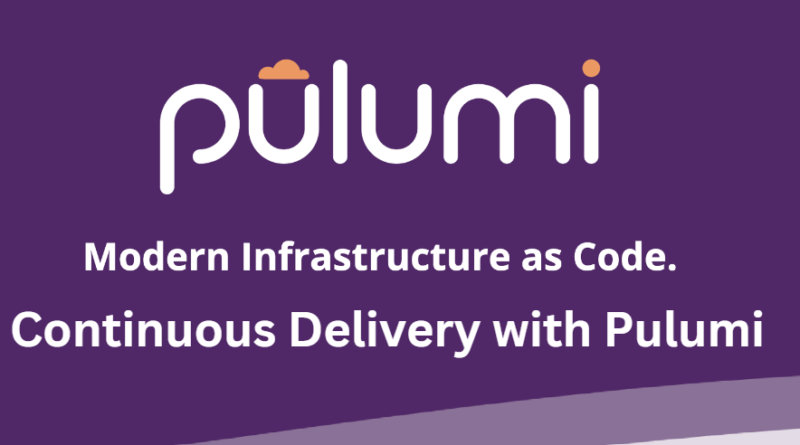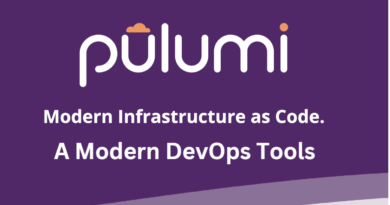Continuous Delivery with Pulumi: Integrating Pulumi into CI/CD pipelines for automated deployments.
Continuous Delivery (CD) is a software development practice that focuses on automating the deployment process to deliver software changes more frequently, reliably, and efficiently. Pulumi, an infrastructure as code (IaC) tool, provides robust capabilities for automating infrastructure deployments and can be seamlessly integrated into continuous integration and continuous delivery (CI/CD) pipelines. This integration allows developers to automate the provisioning and management of infrastructure resources and achieve continuous delivery of their applications.
Integrating Pulumi into CI/CD pipelines brings several benefits to the software development process. It enables teams to maintain consistency in infrastructure deployments, reduce human error, increase deployment speed, and ensure reliable and reproducible deployments. With Pulumi, developers can apply the principles of CD to infrastructure provisioning, delivering changes to infrastructure configurations as frequently and efficiently as application code changes.
The integration of Pulumi into CI/CD pipelines typically involves the following key steps:
- Infrastructure as Code in Version Control: First, infrastructure code, written using Pulumi, is committed to a version control system such as Git. This ensures that infrastructure code is versioned, auditable, and easily accessible by the CI/CD pipeline.
- CI/CD Pipeline Configuration: The CI/CD pipeline is configured to include Pulumi as part of the build and deployment stages. This involves setting up appropriate environment variables, installing the necessary dependencies, and configuring Pulumi commands.
- Infrastructure Validation: Before deploying infrastructure changes, it is essential to validate the infrastructure code. This can be done by running Pulumi’s preview command, which shows the proposed changes to the infrastructure without actually applying them. The preview functionality helps identify potential issues or unintended consequences before the changes are deployed.
- Infrastructure Deployment: Once the infrastructure code has been validated, it is ready for deployment. Pulumi’s update command is used to apply the changes to the target infrastructure stack. Pulumi’s intelligent update engine determines the minimal set of changes required to achieve the desired state and applies them to the infrastructure stack.
- Testing and Validation: After the infrastructure changes are deployed, it is crucial to perform testing and validation to ensure the correctness and reliability of the deployed infrastructure. This can involve running automated tests against the deployed infrastructure, validating configurations, and verifying the desired state of the infrastructure.
- Rollback and Recovery: In case of any issues or failures during the deployment process, it is essential to have mechanisms in place for rollback and recovery. Pulumi provides the ability to roll back to a previous known-good state by leveraging the version control history of the infrastructure code. This ensures that infrastructure changes can be reverted if necessary, maintaining system stability and minimizing downtime.
- Infrastructure Monitoring and Alerting: Continuous monitoring of the deployed infrastructure is critical for identifying issues, performance bottlenecks, and security vulnerabilities. Integrating monitoring and alerting systems into the CI/CD pipeline allows teams to proactively identify and resolve infrastructure-related issues.
- Infrastructure as Code Best Practices: Applying best practices for infrastructure as code is essential for successful continuous delivery. This includes modularizing infrastructure code, using reusable components, following coding standards, implementing versioning strategies, and leveraging code reviews and testing for infrastructure code.
The integration of Pulumi into CI/CD pipelines provides several advantages for continuous delivery of infrastructure changes:
- Automation: Integrating Pulumi with CI/CD pipelines automates the provisioning and management of infrastructure resources. Infrastructure changes are triggered automatically by code changes, reducing manual intervention and eliminating potential human errors.
- Consistency and Reproducibility: With infrastructure defined as code, each deployment is consistent and reproducible. Infrastructure configurations are versioned and can be rolled back if necessary, ensuring that deployments are predictable and reliable.
- Speed and Efficiency: The automation provided by Pulumi and CI/CD pipelines accelerates the deployment process, enabling faster time-to-market for software changes. Developers can iterate and deliver infrastructure changes more frequently, responding rapidly to business needs.
- Collaboration: Integrating Pulumi into CI/CD pipelines promotes collaboration among developers, operations teams, and other stakeholders. Infrastructure code is managed alongside application code, enabling better coordination, code reviews, and knowledge sharing.
- Auditing and Compliance: The use of version control systems for infrastructure code enables auditing and compliance requirements to be met more effectively. The history of infrastructure changes can be tracked, providing visibility into who made the changes and when.
- Scalability: CI/CD pipelines with Pulumi can handle large-scale deployments across multiple environments, making it easier to scale infrastructure provisioning. Whether deploying to development, staging, or production environments, the same CI/CD pipeline can be used, ensuring consistent processes across different deployment targets.
- Extensibility: Pulumi’s integration with other tools and services allows for extensibility and customization. Developers can leverage Pulumi’s plugin system and integrations with various services to incorporate additional functionality into their CI/CD pipelines, such as integration with monitoring, configuration management, or security scanning tools.
In summary, integrating Pulumi into CI/CD pipelines enables the automation and continuous delivery of infrastructure changes. By applying infrastructure as code practices, teams can achieve consistency, reliability, and scalability in their infrastructure deployments. The integration allows for rapid iterations, collaborative development, and efficient management of infrastructure resources. With Pulumi and CI/CD pipelines, developers can achieve the benefits of continuous delivery for both their application code and infrastructure configurations, delivering changes to production with speed, reliability, and efficiency.




